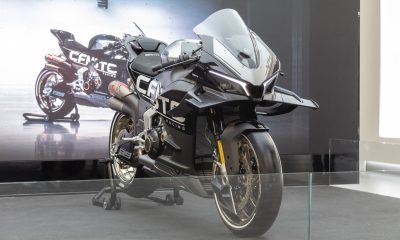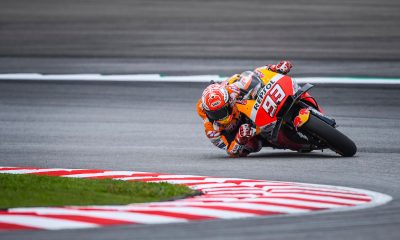At Mugello, Ducati’s brake setup reveals the trade-offs of larger discs: more stopping power vs. added weight and handling compromise. Here’s why smarter braking matters.

Subscribe to our Telegram channel for instant updates!
In MotoGP, where the difference between first and fifth can be measured in milliseconds, brake choices can define a race. But at this weekend’s Italian Grand Prix in Mugello, it’s not about who can stop hardest, it’s about how that stopping power is managed.
The conversation in the paddock revolves around Francesco Bagnaia’s recent shift to a 355mm brake disc in Aragon, a move that sparked speculation about whether bigger discs might be the new standard for performance. But as Brembo’s Andrea Pellegrini explained, this isn’t a one-size-fits-all solution — and in racing, more isn’t always better.
The Bigger Disc Trade-Off
On paper, switching to a larger disc seems like a win: more surface area means more stopping force. But there’s a catch: weight. The jump from a standard 340mm to a 355mm disc adds mass not only to the brakes themselves but also to the front axle when thermal covers are needed to maintain optimal temperature.
That weight doesn’t just sit quietly either. It affects how the bike handles, particularly under braking and turning, and in a sport where balance and feel are everything, that’s no small compromise.
“You need to control the temperature,” said Pellegrini. “If the discs are too cold, you lose stopping power. But to warm up the 355mm disc fast enough, you have to use covers, and those add even more weight.”

Mugello Isn’t Aragon
In Aragon, Bagnaia made the switch during warm-up, and it worked, likely because Aragon demands more from the brakes due to its long straights and hard braking zones. But Mugello is a different beast: flowing, fast, and relatively light on the brakes.
So while Bagnaia starts the weekend on the 340mm standard disc, the real test will be whether the added braking power of the 355mm is worth the trade-off in weight and agility — especially on a track that doesn’t punish the brakes like Aragon does.
Even Within Teams, There’s No Standard
Interestingly, the choice isn’t even universal within Ducati’s factory team. Bagnaia’s teammate, Marc Marquez, is sticking with the 340mm high mass discs. Why? Because even subtle differences in riding style, braking habits, and bike setup mean that what works for one rider might not suit another.
That’s the real story: MotoGP isn’t about bolt-on performance upgrades. It’s about balance. Every component — even a brake disc — plays a part in a larger equation, and chasing more of one performance metric (like braking force) can come at the cost of others (like turn-in response or tire wear).

The Bigger Picture
While fans often focus on horsepower or top speed, braking is where races are won or lost. But as this weekend’s discussions show, the right braking setup is as much about restraint as it is about performance. Mugello might not be the track to gamble on bigger brakes and for some riders, heavier could very well mean slower.
At the end of the day, it’s not just about who brakes the hardest. It’s about who brakes smartest.































Facebook
Instagram
X (Twitter)
YouTube
LinkedIn
RSS